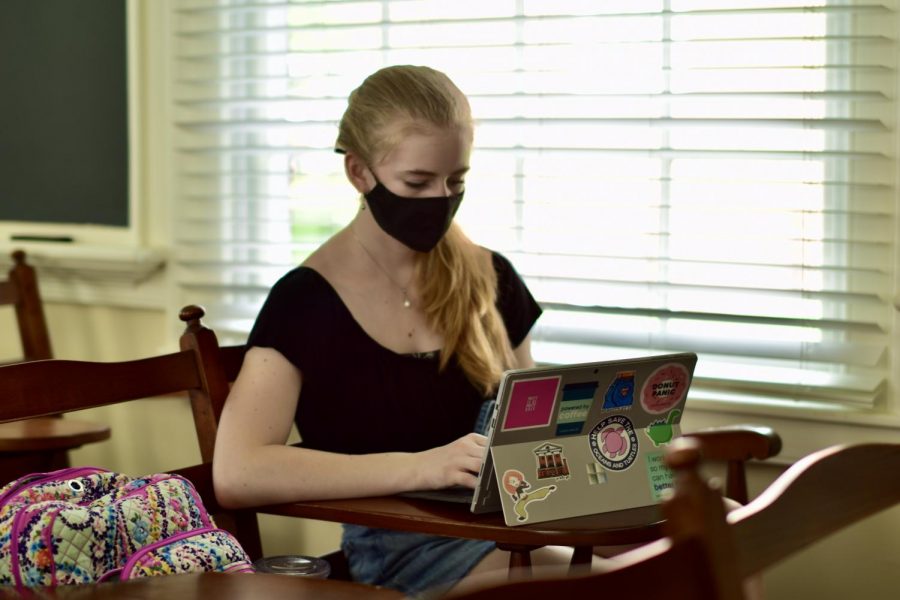Professors face new challenges teaching amidst unsure fall term
Professors question how to keep class morale high as uncertainty increases
A student dons a face mask in an on-campus class.
September 22, 2020
As students adjust to the academic environment of COVID, professors are optimistic but cautious of the pandemic.
Many faculty members spent the summer attending workshops on virtual instruction and creating backup plans in case an outbreak ended on-campus learning fall term.
“It’s like doomsday planning,” said Toni Locy, a journalism professor teaching two virtual courses this semester said. “We had to plan for every possible situation.”
Joel Kuehner, a professor in the physics and engineering department agreed.
“It has been one of the most difficult termsI have ever prepared for because you do not know what will happen,” Kuehner said. “You do not plan for just one thing. You should plan for everything and do it at a moment’s notice.”
And with schools like the University of North Carolina at Chapel Hill and nearby James Madison University opting to end in-person learning shortly after opening for the fall term, these concerns are not unwarranted.
Washington and Lee has seen its own COVID-19 positivity rates steadily climb in recent weeks as more students tested positive for COVID-19 and isolation and quarantinebeds in Baker and Davis Hall have filled.
But virtual learning has already come with hurdles for some professors across disciplines.
James Leva, a professor in the romance languages department said it was hard to give each student individual attention when teaching elementary language courses online.
“We have to keep the communication moving from one person to another and that does not work online,” Leva said.
And other classes that emphasize teamwork, like labs, have faced restrictions with COVID guidelines.
Some students now have to conduct lab assignments entirely on their own.
Jon Erickson, a professor in the physics and engineering department, said he noticed that social distancing caused measurements and recordings to go much slower in his lab classes. But this turn toward more individualizedlearning was not without its benefits, he said.
“Everyone is going to learn how to do things very well,” Erikson said.
Yet some professors have noticed that one of the hardest parts of virtual learning amidst COVID is creating a class dynamic without the usual in-person interactions.
“The greatest nuisance is the harder challenge we face to create a team spirit, rapport, or sense of closeness among the members of the class,” Florinda Ruiz, the director of the writing program and professor of writing said.
But Ruiz said this encouraged her to thinkoutside of the box and find new ways to getstudents involved in class.
“I have been able to learn and incorporate into class new programs and software that I was not using before,” Ruiz said.



